Buster Stiggs
aka Mark Hough
Buster Stiggs is best known as a member of New Zealand punk pioneers The Suburban Reptiles and the band which grew out of the Reptiles, The Swingers.
On the eve of The Swingers’ brief Australian success, he left the band and immediately joined top Australian band Models, serving long enough to record with them and enjoy a stint in post-punk/new romantic London. Stiggs’s time in high-profile bands lasted about five years, yet his influence was felt both before and after his period of prominence.
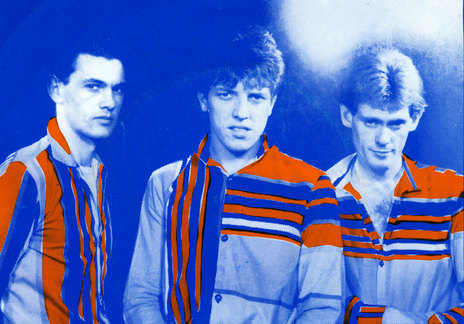
Phil Judd, Buster Stiggs, Bones Hillman in early 1981
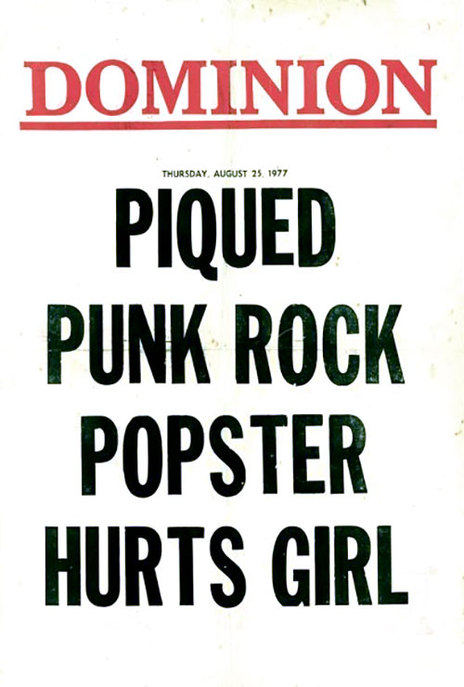
The Dominion street poster the morning after Buster Stiggs had thrown a drumstick into the audience at Victoria University in August, 1977. A girl was accidently hit and the papers blew up the story, causing vigilante type operations against both The Suburban Reptiles and The Scavengers, with Johnny Volume being beaten a couple of nights later in the university toilets.
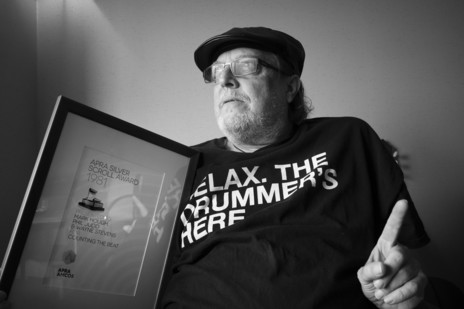
Buster Stiggs - Mark Hough - in September 2015 with the Apra certificate for The Swingers' 'Counting the Beat' when it was belatedly awarded the 1981 Silver Scroll.
Photo credit:
Stuart Page
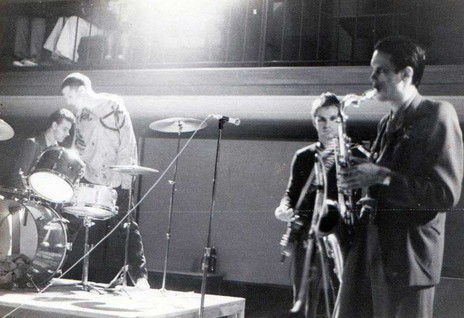
Suburban Reptiles with stand-in guitarist Johnny Volume at the August 1977 Students' Arts Festival at Victoria University. The band are setting up and The Scavengers' Des Truction is also seen. From left: Des Truction, Buster Stiggs, Johnny Volume and Jimmy Joy.
Photo credit:
Photo by Wayne Hunter
Suburban Reptiles - Megaton
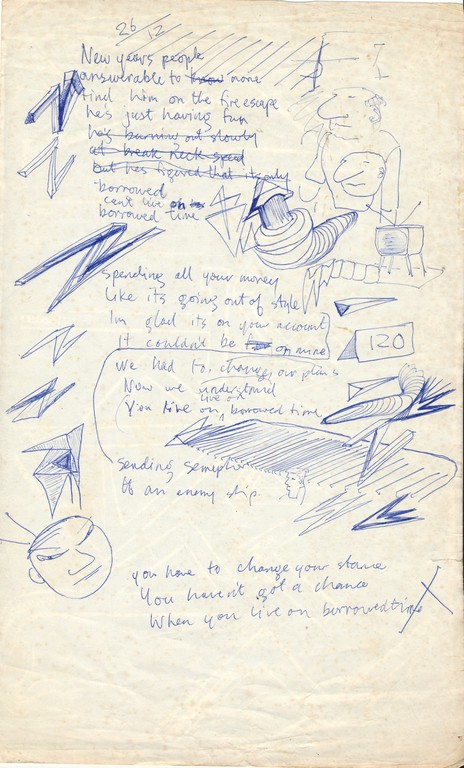
Buster Stiggs' handwritten original lyrics to 'Saturday Night Stay At Home'.
Photo credit:
Simon Grigg collection
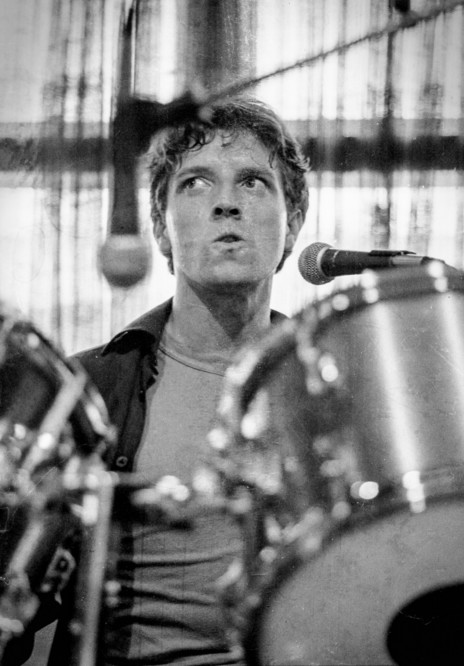
Buster Stiggs with The Swingers at the Windsor Castle, Parnell, Auckland, 1979.
Photo credit:
Peter Tocher
The Swingers - One Good Reason
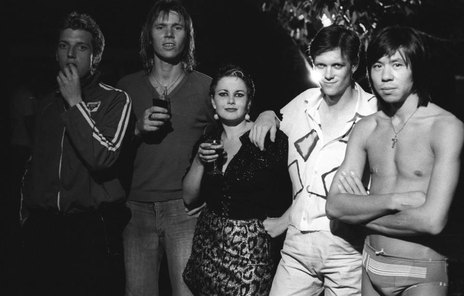
Buster Stiggs, pop star Richard Wilde, Zero, Jimmy Joy, Colin Lum from Phonogram at the Megaton single release party at The Poenamo Hotel, Takapuna, 2 February 1978.
Photo credit:
Photo by Murray Cammick
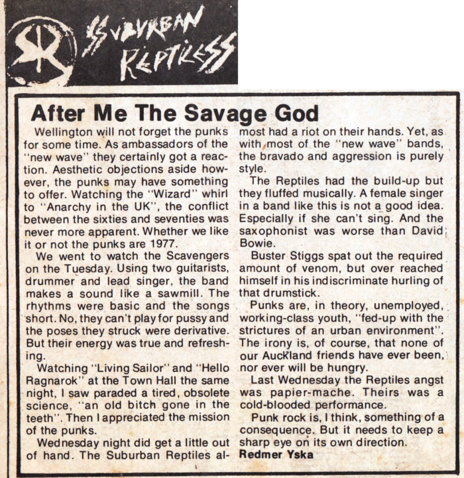
Redmer Yska reviews The Suburban Reptiles for Rip It Up
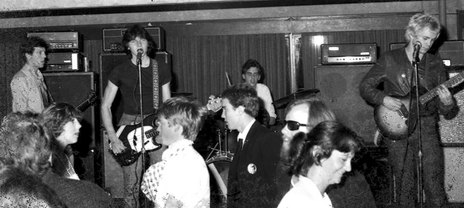
The Scavengers at Auckland University Cafe, with extra member, Buster Stiggs
Photo credit:
Rachel McCarthy collection
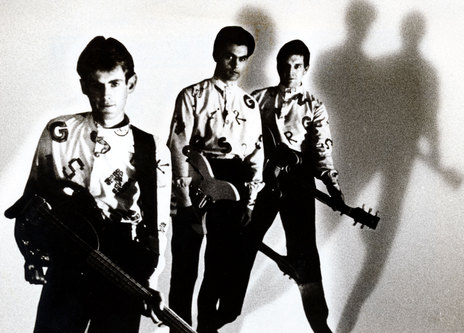
The Swingers in 1979: Bones Hillman, Phil Judd, Buster Stiggs
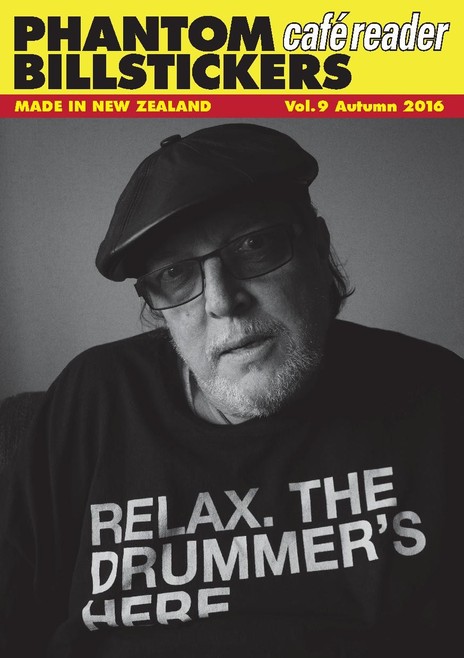
Buster Stiggs on the cover of Cafe Reader #9, Autumn 2016 - Photo by Stuart Page
Photo credit:
Stuart Page
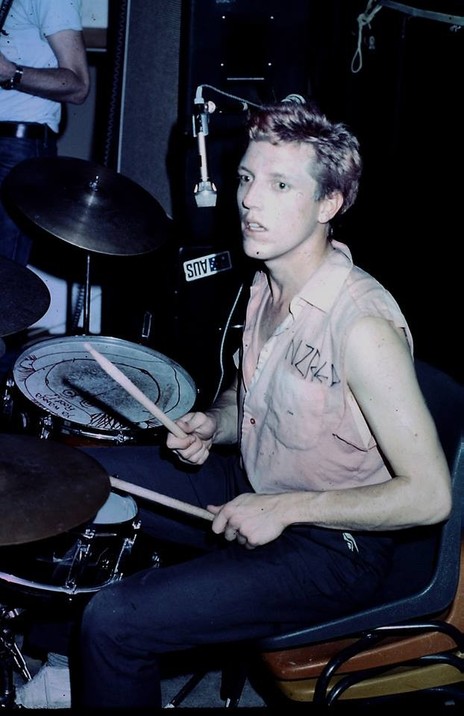
Buster Stiggs with the Suburban Reptiles at the Classic Cinema, Queen Street, Auckland, 1977
Photo credit:
Jay Tidball
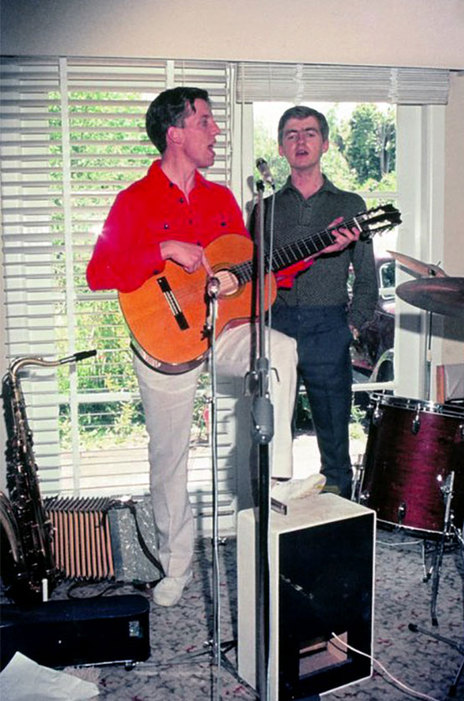
After Hours in 1976 - Mark "Buster Stiggs" Hough and Neil Finn
Photo credit:
Buster Stiggs collection
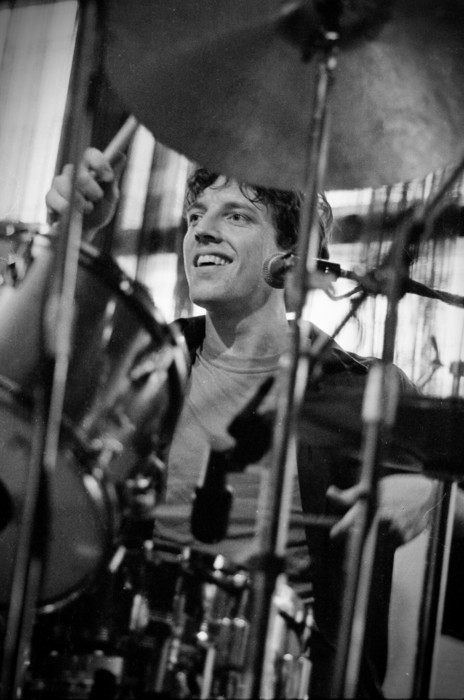
Buster Stiggs with The Swingers at The Windsor Castle, Parnell, Auckland, late 1979.
Photo credit:
Peter Tocher
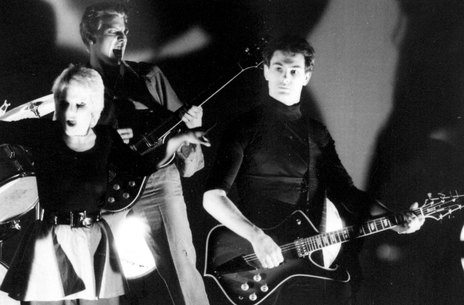
Phil Judd with The Suburban Reptiles on the Saturday Night Stay At Home video shoot. L to r: Zero, Buster Stiggs, Phil Judd
Photo credit:
Simon Grigg Collection
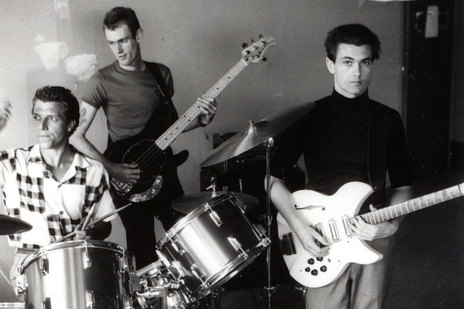
Buster Stiggs, Bones Hillman, Phil Judd
Photo credit:
Photo by Murray Cammick
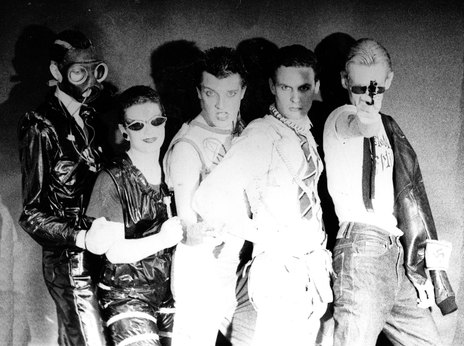
Jimmy Joy, Zero, Buster Stiggs, Billy Planet, Bones Hillman. Taken for a fashion shoot by an Auckland Star photographer, October 1977.
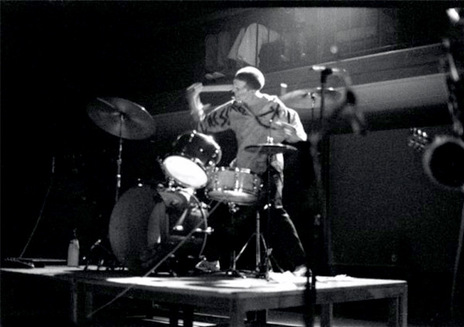
Buster Stiggs, shortly before the drumstick "incident", Union Hall, Victoria University of Wellington, August 1977
Photo credit:
Photo by Stuart Page
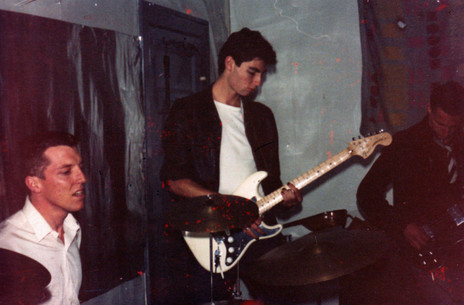
Buster Stiggs at his first practice with the Suburban Reptiles, Park Lane, Grafton, April or May 1977. From left: Buster Stiggs, Brian Nichols and Billy Planet
Photo credit:
Simon Grigg
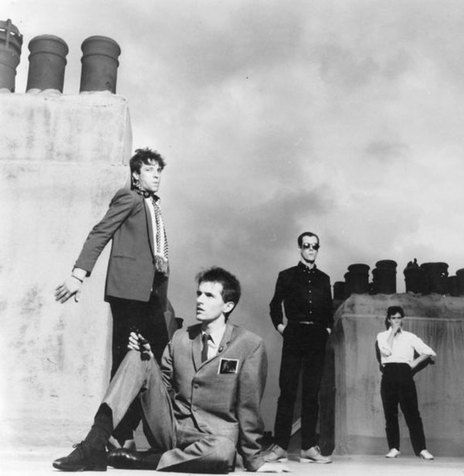
Australian band Models in October 1981, with Buster Stiggs on the left (standing).
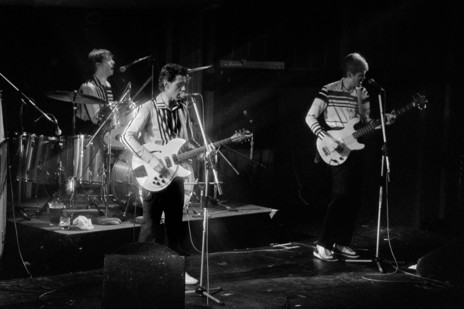
The Swingers at Mainstreet, Auckland, late 1979.
Photo credit:
Photo by Peter Tocher.
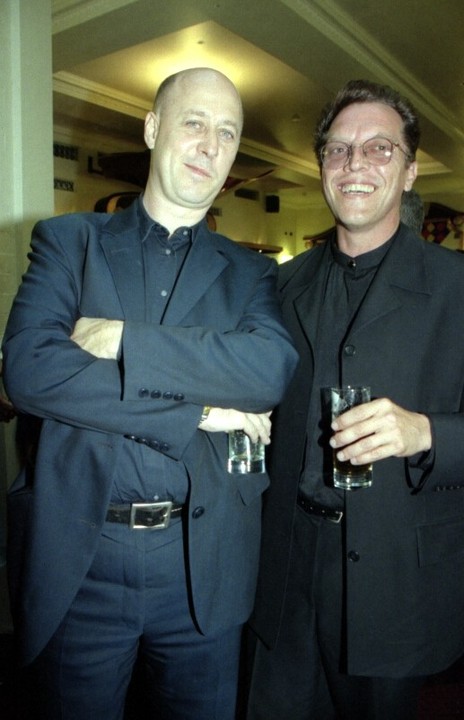
Simon Grigg with Buster Stiggs (of Suburban Reptiles and Swingers fame), at the APRA Silver Scroll in 1998
Photo credit:
Simon Grigg collection
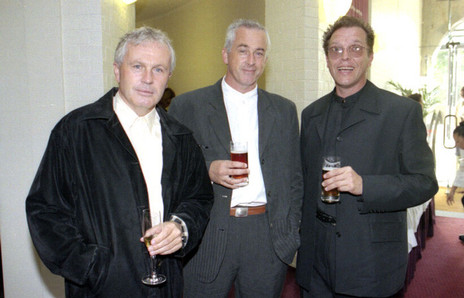
Mike Chunn, Geoff Chunn and Buster Stiggs
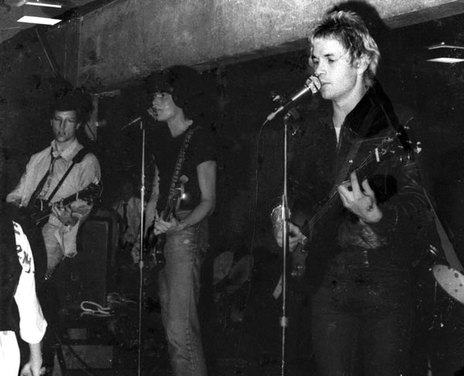
The Scavengers at Auckland University with Buster Stiggs (left) guesting, 1978
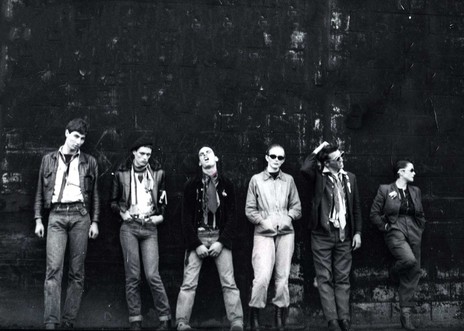
The Suburban Reptiles in Onehunga, June 1977: Shaun Anfrayd, Jimmy Joy, Billy Planet, Sissy Spunk, Buster Stiggs, Zero. Taken before the Marcellin College which saw them featured on every weekend paper's front page that week.
Photo credit:
Photo by Simon Grigg
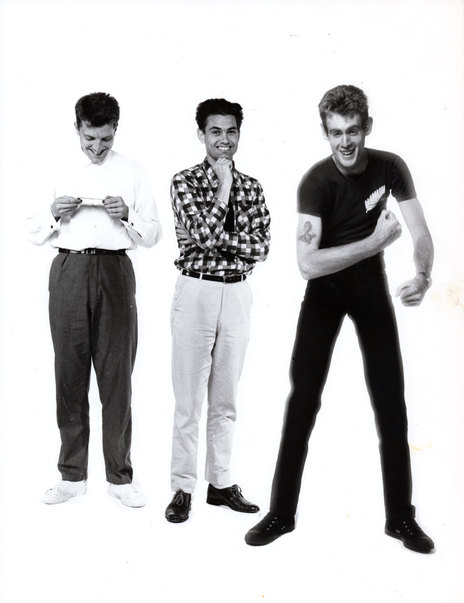
The Swingers, 1980: Buster Stiggs, Phil Judd, Bones Hillman
Suburban Reptiles - Razorblade Rosie (1978, from David Blyth's film Angel Mine)
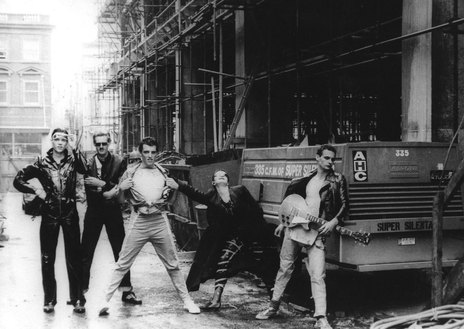
Suburban Reptiles in Auckland's Jean Batten Place, October 1977. L to r: Jimmy Joy, Bones Hillman, Buster Stiggs, Zero, Billy Planet.
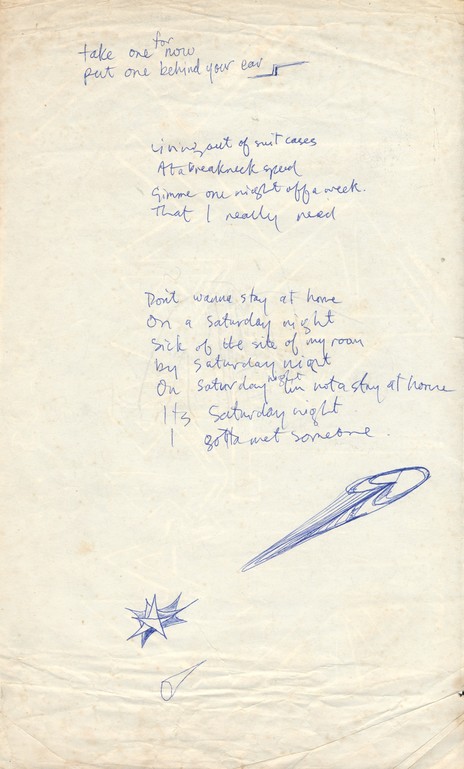
Buster Stiggs' handwritten original lyrics to 'Saturday Night Stay At Home'.
Photo credit:
Simon Grigg collection
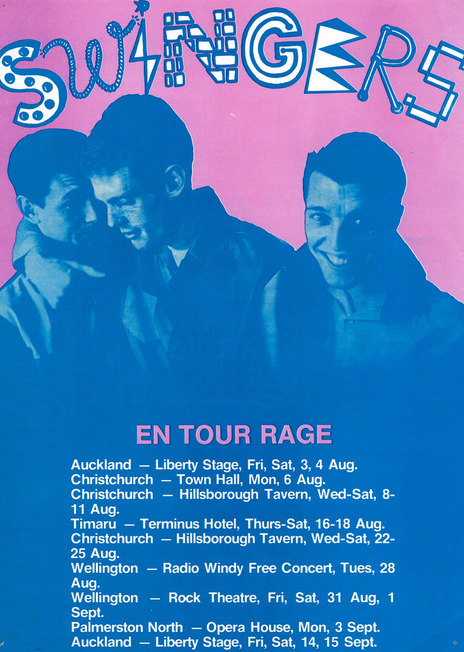
The Swingers in 1981 - Phil Judd, Bones Hillman, Buster Stiggs
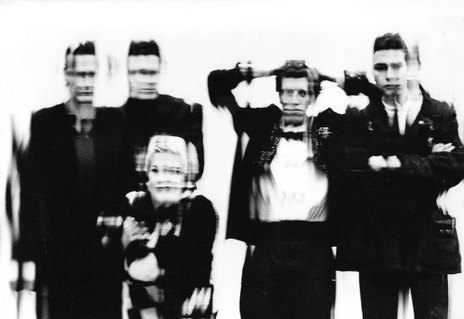
Suburban Reptiles, mid-1978: Billy Planet, Jimmy Joy, Zero, Buster Stiggs and Tony Baldock
Photo credit:
Simon Grigg collection. Photo by Paul Hartigan
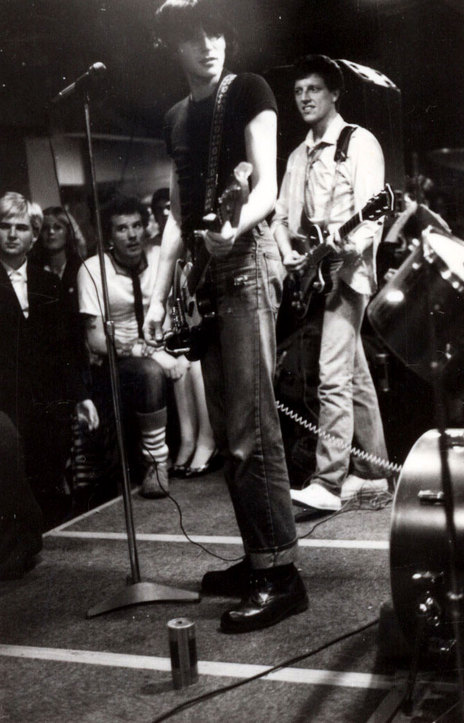
The Scavengers' Ronnie Recent with guest Buster Stiggs, Auckland University 1978
Photo credit:
Photo by Murray Cammick
The Swingers - Counting The Beat
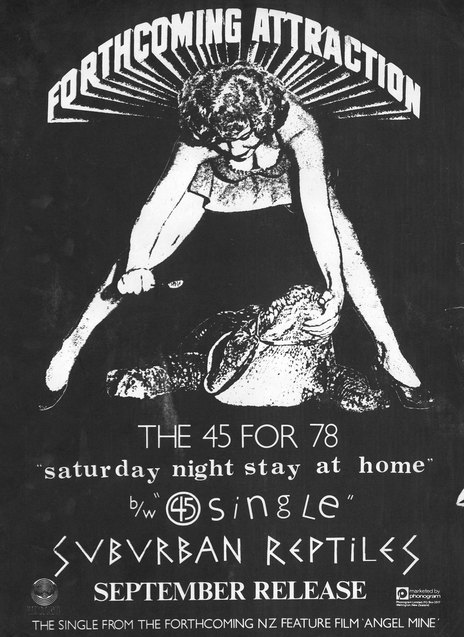
The Buster Stiggs designed poster for Saturday Night Stay At Home, using an image from the 1950s. The poster was recreated in the 2014 7-inch reissue of the single.
Photo credit:
Simon Grigg collection
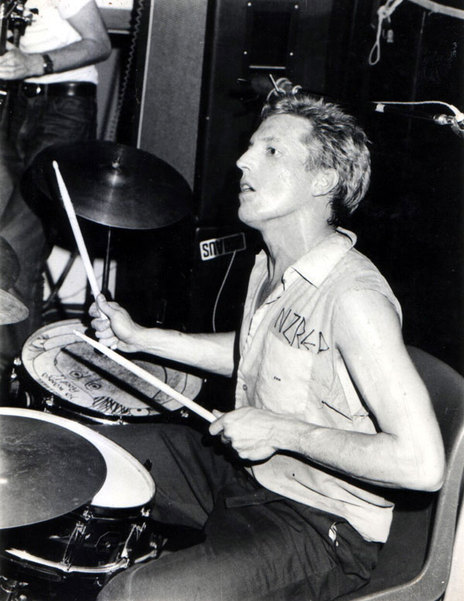
Buster Stiggs at the Classic Cinema, 3 December 1977
Photo credit:
Photo by Jonathan Tidball
Suburban Reptile - Saturday Night Stay At Home (1978)
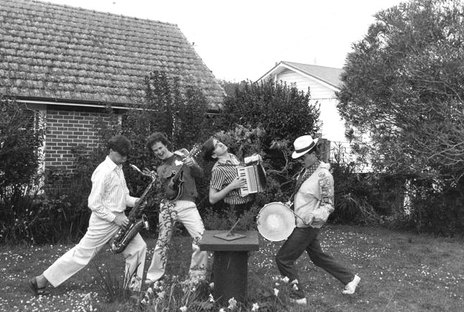
After Hours circa 1976 with Neil Finn second from right and Mark "Buster Stiggs" Hough on the left, and Gray Nichol on the right.
Photo credit:
Buster Stiggs collection
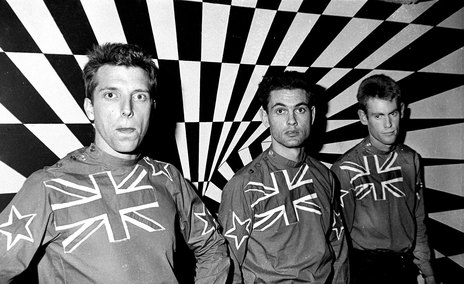
The Swingers in 1979: Buster Stiggs, Phil Judd, Bones Hillman
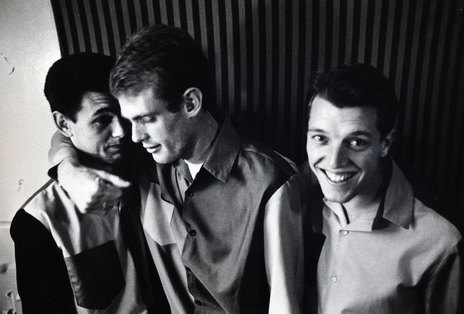
The Swingers in 1980: Phil Judd, Bones Hillman, Buster Stiggs
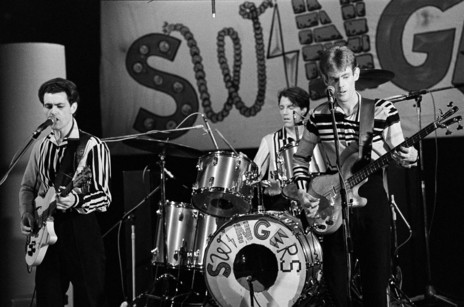
The Swingers at TV2 Studio, Auckland, November 1979
Photo credit:
Photo by Peter Tocher

